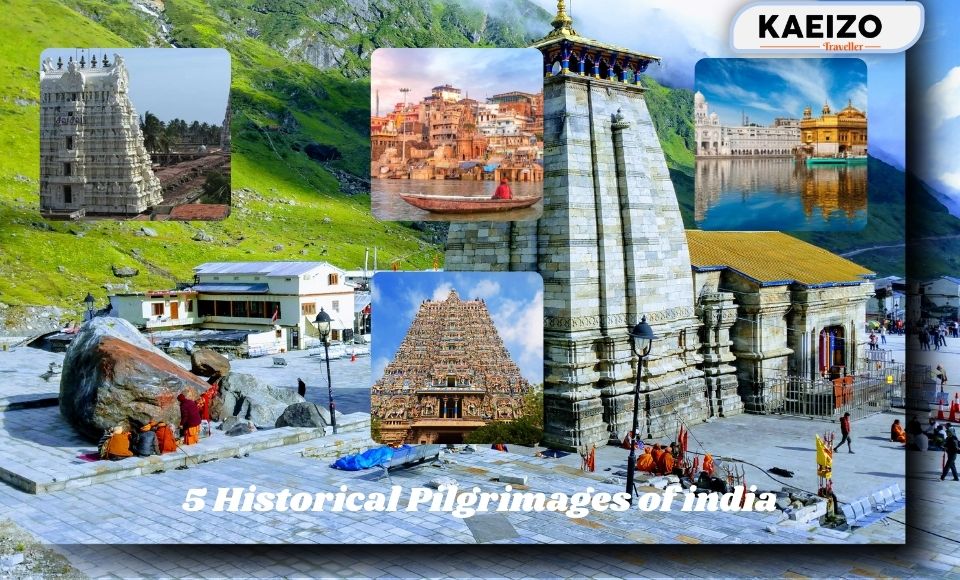
Pilgrimage
5 Historical Pilgrimages of india
Here are five notable historical pilgrimages in India:
1. Varanasi (Kashi)
- Significance: Varanasi is one of the oldest living cities in the world and holds immense significance in Hinduism. It is considered the spiritual capital of India.
- Key Sites: Kashi Vishwanath Temple, dedicated to Lord Shiva; the ghats along the Ganges River, where pilgrims perform rituals and bathe to cleanse their sins.
- Historical Context: Varanasi has been a center of learning and civilization for over 3,000 years. It is believed that a dip in the Ganges can purify one’s soul, and the city is also a major cremation site for Hindus.
2. Bodh Gaya
- Significance: Bodh Gaya is the most important pilgrimage site for Buddhists, as it is the place where Siddhartha Gautama attained enlightenment and became the Buddha.
- Key Sites: The Mahabodhi Temple, a UNESCO World Heritage site; the Bodhi Tree under which the Buddha meditated.
- Historical Context: The Mahabodhi Temple complex was built by Emperor Ashoka in the 3rd century BCE. It has been a major pilgrimage destination for Buddhists from around the world for centuries.
3. Ajmer Sharif
- Significance: Ajmer Sharif is a renowned Sufi shrine dedicated to Khwaja Moinuddin Chishti, a revered Sufi saint.
- Key Sites: The dargah (shrine) of Khwaja Moinuddin Chishti, which attracts millions of pilgrims from different faiths.
- Historical Context: The shrine has been a pilgrimage site since the 12th century. It symbolizes spiritual unity and communal harmony and is particularly famous for its annual Urs festival, which commemorates the death anniversary of the saint.
4. Rameswaram
- Significance: Rameswaram is one of the holiest places for Hindus and is part of the Char Dham pilgrimage, which also includes Badrinath, Puri, and Dwarka.
- Key Sites: The Ramanathaswamy Temple, known for its magnificent architecture and long corridors; the Agni Theertham, a sacred water body.
- Historical Context: According to Hindu mythology, Rameswaram is the place where Lord Rama built a bridge to Lanka to rescue his wife Sita. The temple is believed to have been established in the 12th century.
5. Amritsar
- Significance: Amritsar is the spiritual and cultural center of the Sikh religion.
- Key Sites: The Golden Temple (Harmandir Sahib), the most sacred gurdwara for Sikhs; the Akal Takht, the highest seat of earthly authority of the Khalsa.
- Historical Context: The Golden Temple was founded by Guru Ram Das, the fourth Sikh Guru, in 1577. The temple complex has been a pilgrimage site for Sikhs since its establishment and is renowned for its beautiful architecture and serene environment.




